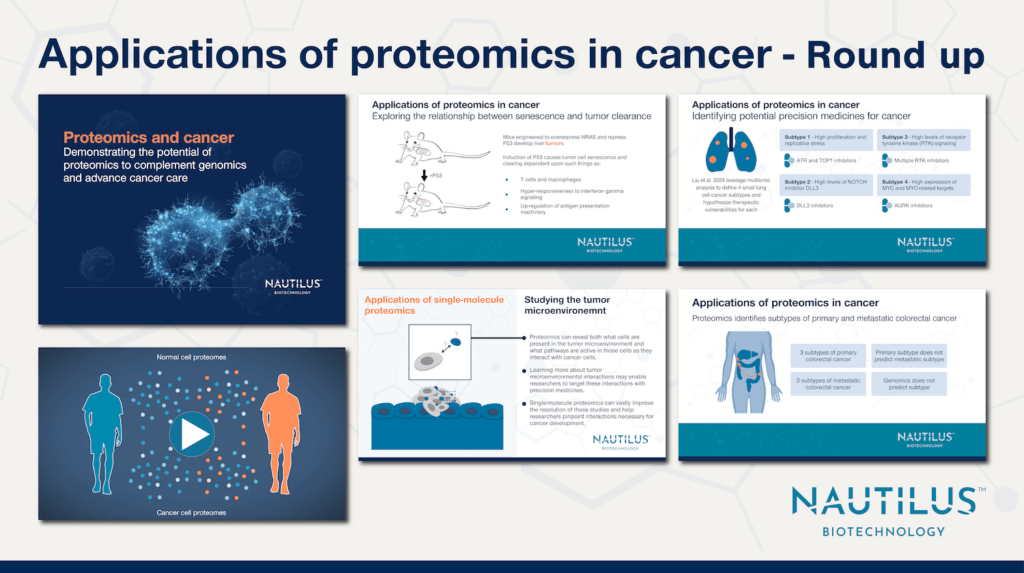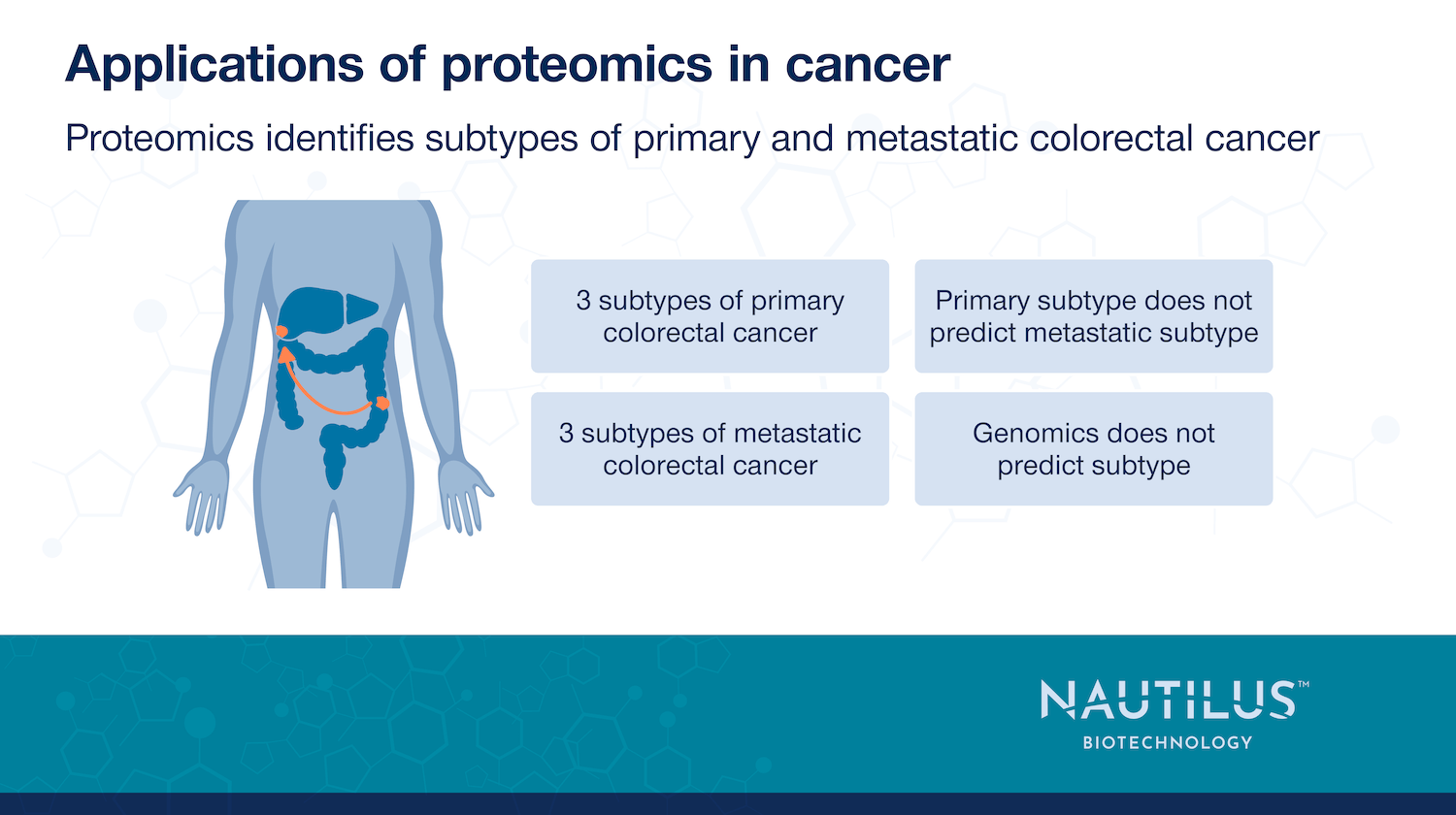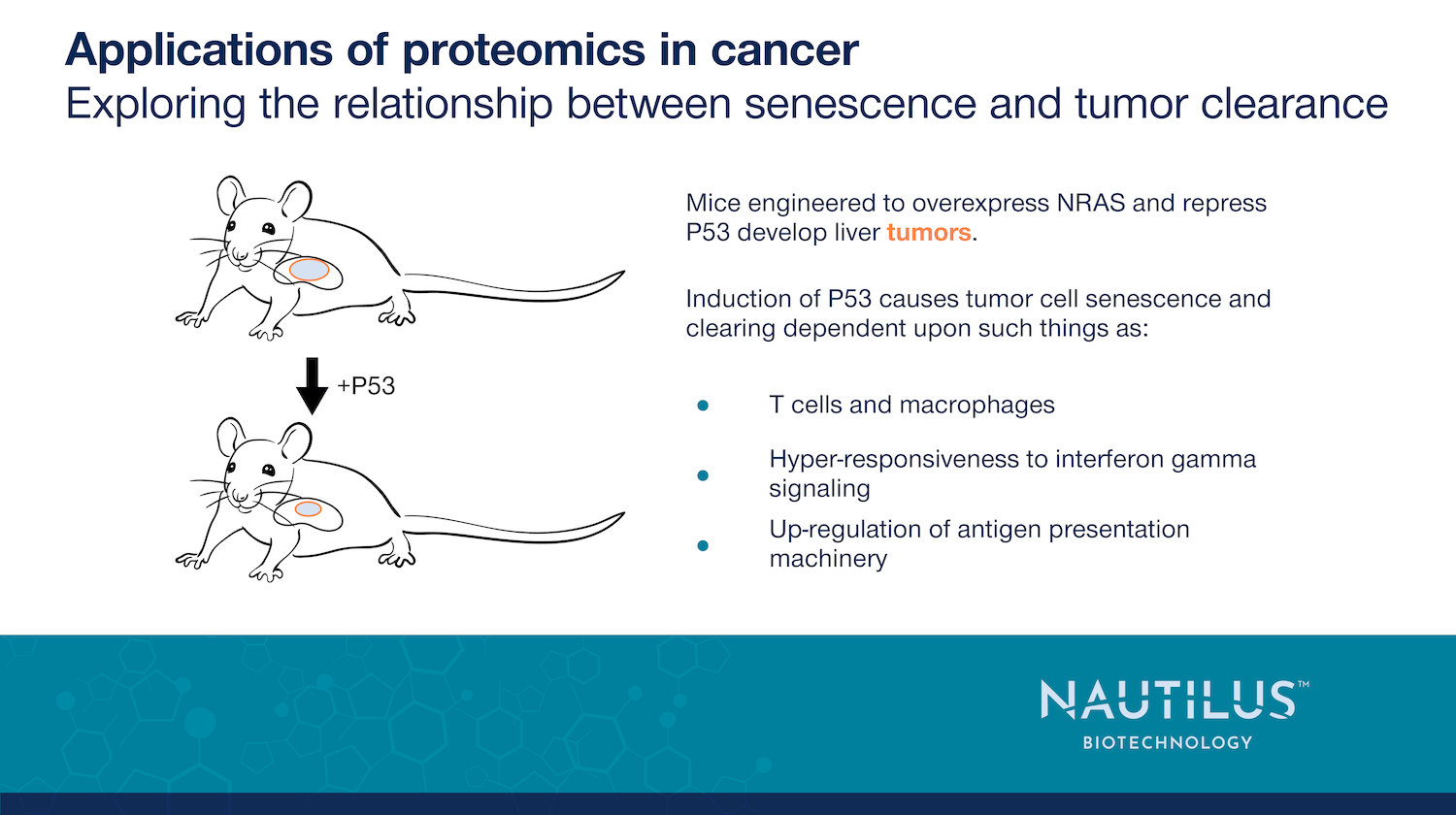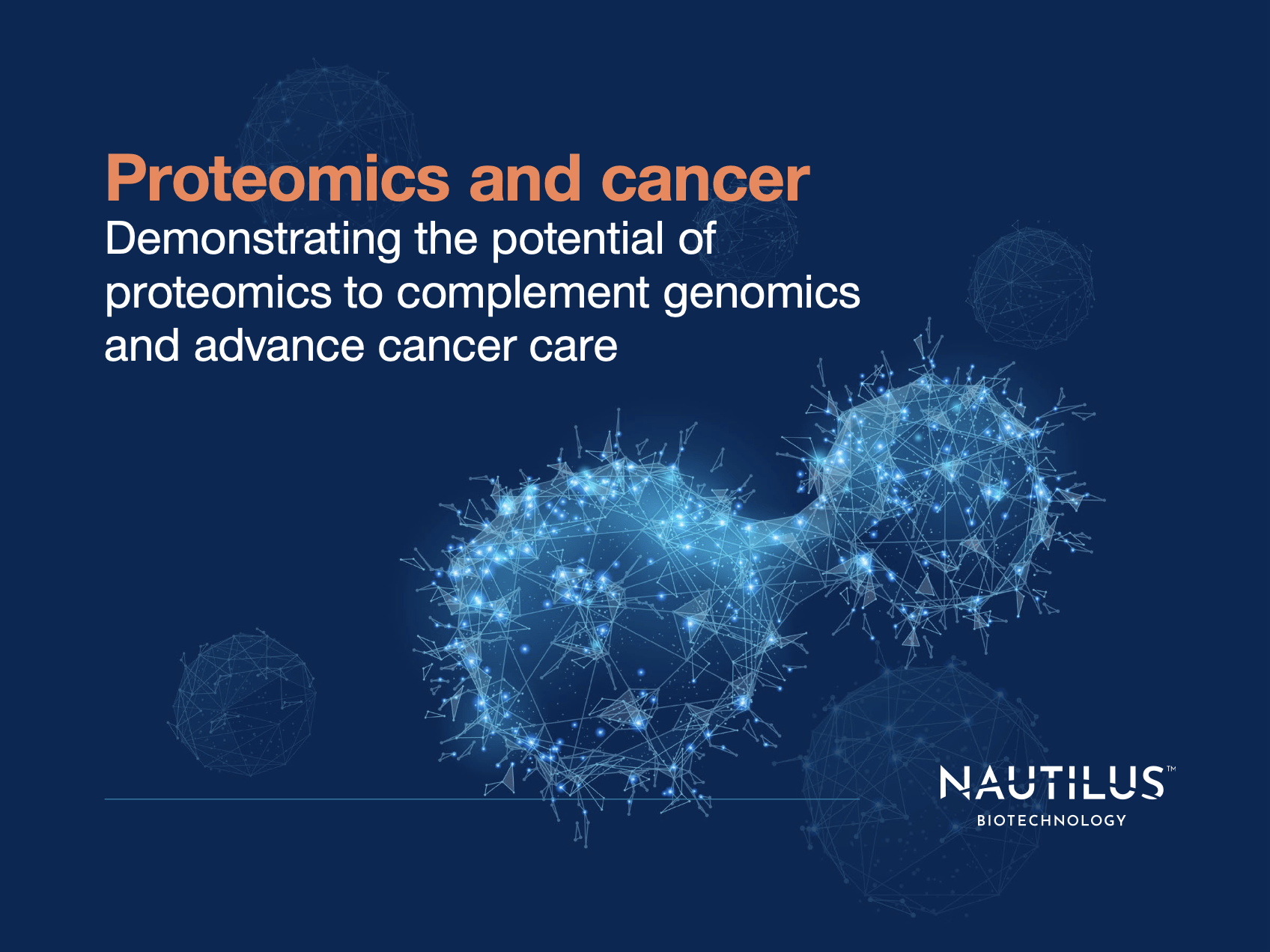
Applications of proteomics in cancer – Round up August 2024
Nautilus Biotechnology
August 8, 2024

When thinking about cancer, we often think first about the genetic mutations that give rise to it. While cancer mutations are informative, there is an abundance of complex biology that occurs downstream of such mutations, and much of that biology is driven by proteins. Thus, to get a fuller understanding of cancer biology and to develop more effective treatments, researchers are now employing the latest proteomic technologies. In doing so, they are uncovering aspects of cancer biology that they simply could not see with genomics. To celebrate this exciting new era of proteomics-powered cancer research, we recently featured summaries of research at the intersection of proteomics and cancer on our blog. We have also compiled these and many additional posts in our updated Proteomics and cancer eBook.
Here, we provide a glimpse at the posts, the eBook, and our recent animation covering the power of proteomics to fuel cancer research. We hope you enjoy these resources and encourage you to reach out with any questions!
Using proteomics to expand the scope of cancer research beyond driver mutations
Driver mutations set otherwise healthy cells on a path to malignancy and can make cancer cells resistant to treatment. Genomics technologies enable researchers to identify such mutations, but often leave researchers in the dark about how the mutations drive cancer. In addition, many aspects of cancer biology are not genetically based. In this post, we cover some of the ways proteomics can expand our knowledge of cancer beyond driver mutations and specifically highlight:
- How proteomic changes can enable cancer recurrence
- How the proteome of the tumor microenvironment impacts cancer
- How the cancer cell proteome can impact responses to therapies
Identifying potential precision medicines for cancer
Precision medicines target the precise molecular underpinnings of disease. Successful precision medicines have been designed to target genetic lesions in cancer, but knowledge of the proteome could help researchers make more effective precision medicines that target the proteins active in malignant cells now. Toward this end, Liu et al. 2024 employed proteomics to break small cell lung cancer into four subtypes and identify therapeutic targets in each subtype. They were even able to demonstrate the effectiveness of some of their treatment strategies in mouse xenograft models. This work points to the power of proteomics to fuel precision medicine.
Studying the tumor microenvironment
Tumor cells do not live in isolation but are surrounded by non-mutated cells with altered biology that might promote or prevent tumor clearance and even impact metastasis. In this blog post, we cover work by Petralia et al. 2024 showing how proteomics can help researchers define the immune make-up of the tumor microenvironment as well as signatures of therapeutic responsiveness. We also highlight ways single-molecule proteomics can advance this kind of work in the future.
How proteomics complements genomic studies of colorectal cancer metastasis
Colorectal cancer metastasis often has dire consequences. To learn more about this process, Tanaka et al. 2024 used a multiomics approach. They found metastasis was better reflected in the proteome than the genome. Furthermore, their proteomic analyses identified 3 types of primary colorectal cancer and 3 types of metastatic colorectal cancer that were not predicted by genomics. This work and future work like it could guide diagnoses and treatments for both primary and metastatic colorectal cancer.
Exploring the relationship between senescence and tumor clearance
The relationship between senescence and cancer is complex. Nonetheless, senescence, a state in which cells stop dividing, can promote tumor clearance under certain conditions. Chen et al. 2023 use proteomics to explore the impacts of senescence on tumor clearance in a mouse model of liver cancer and P53-induced senescence. They discovered immune cells and signaling pathways important for senescence-induced tumor clearance. Their work may help guide immunotherapies in the future.
Updated Proteomics and cancer eBook
We’ve included the blog posts summarized above and many more in our full Proteomics and cancer eBook.
Download the Proteomics and cancer eBook here.
If you have a favorite example of the power of proteomics in cancer research, please share it with us and we may include it in our next eBook update!
Unlocking the potential of proteomics to fuel cancer research
For a visual overview of many of the topics highlighted above, check out our animation titled, “Unlocking the potential of proteomics to fuel cancer research.” The animation covers how proteomics can help us:
- Understand cancer resistance to therapies
- Detect changes in the tumor microenvironment
- Assess determinants of response to precision medicine.
Please give a watch and let us know what you think in the YouTube comments!
MORE ARTICLES







